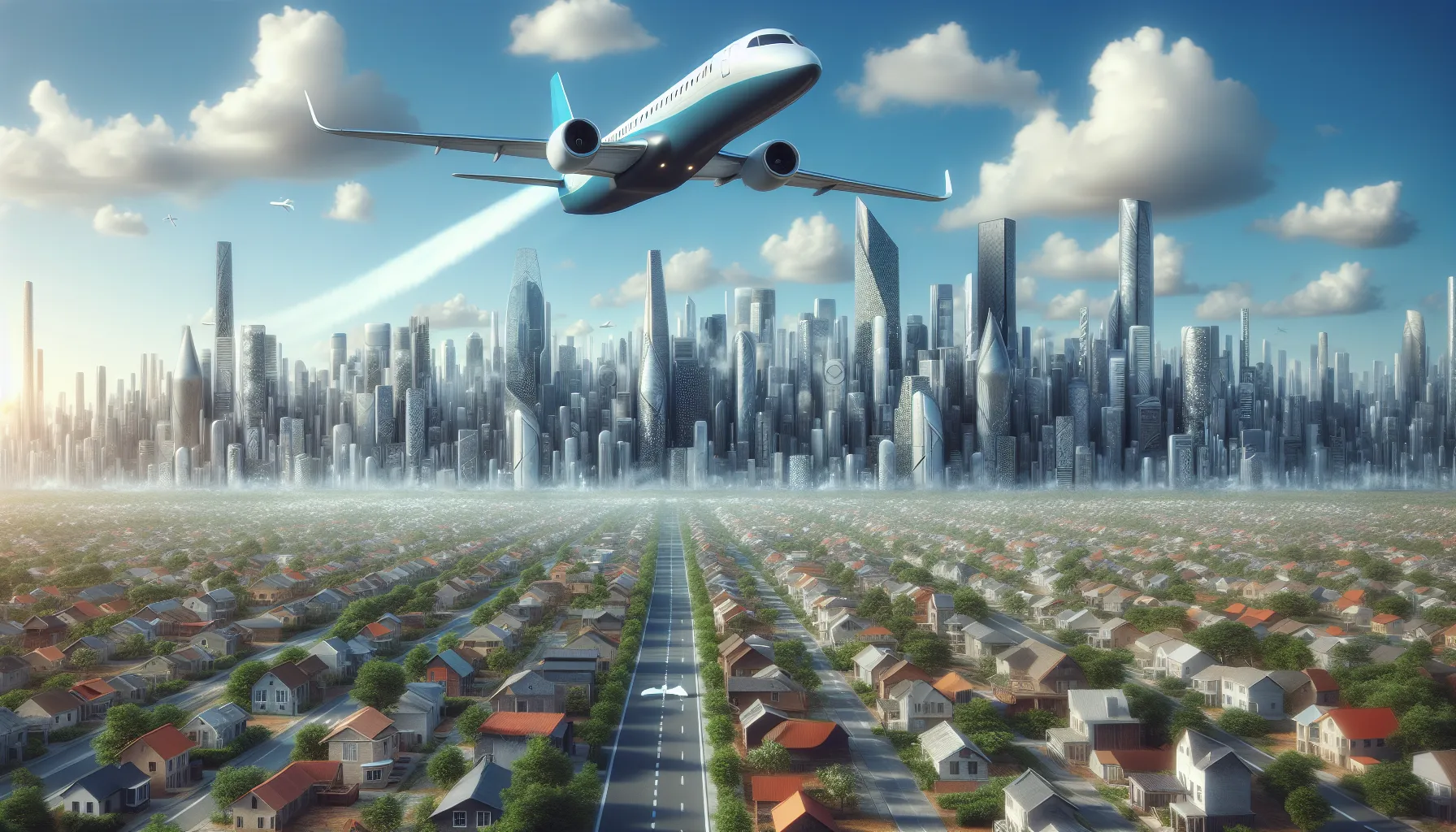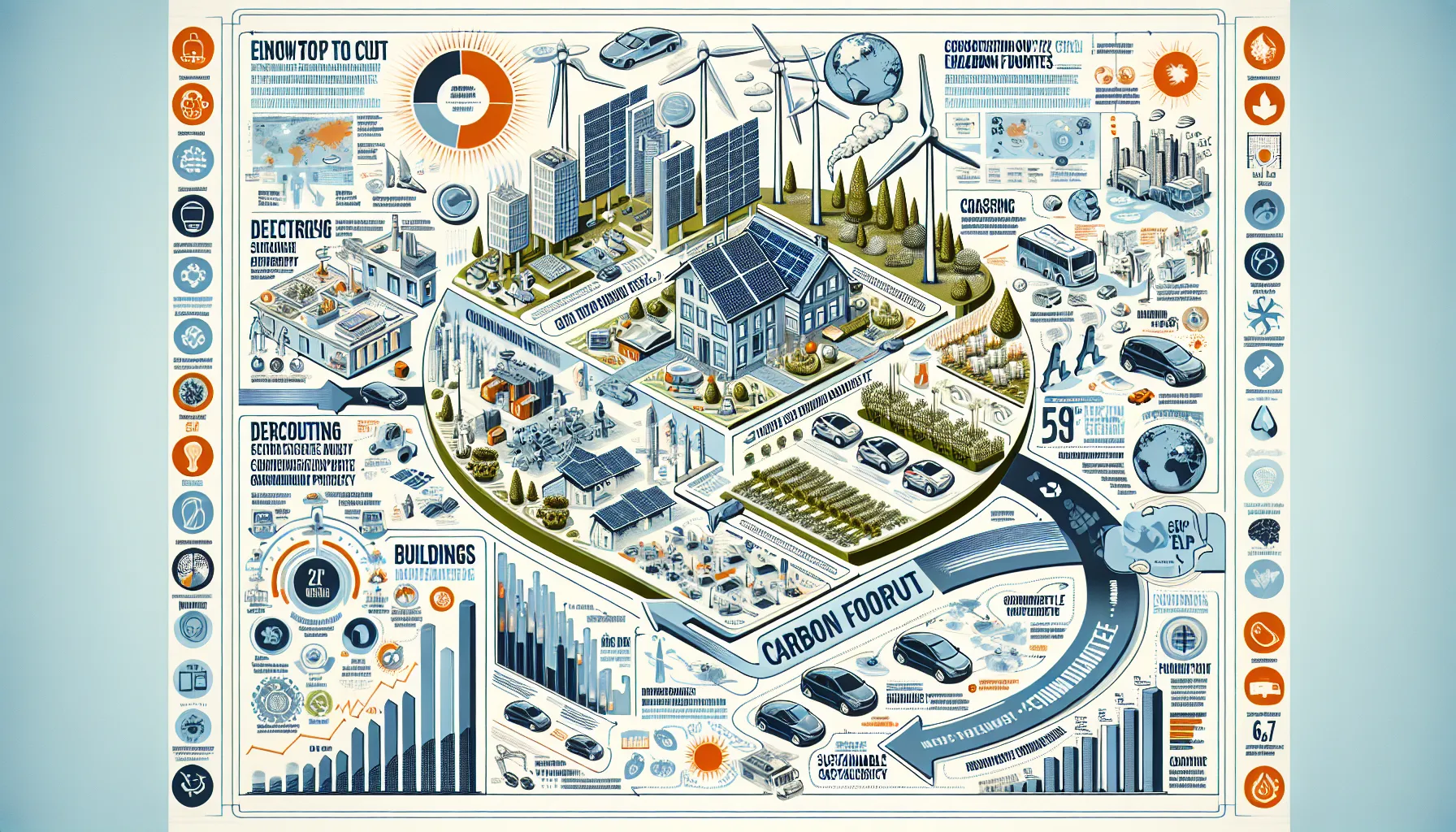Welcome to our IELTS Reading practice session focused on the topic of “Electric planes for reducing emissions.” This article provides a comprehensive IELTS Reading test, complete with passages, questions, and answers to help you prepare for your upcoming exam. Let’s dive into this fascinating subject and enhance your reading skills!
Table Of Contents
 Electric planes reducing carbon emissions
Electric planes reducing carbon emissions
Introduction
The aviation industry is undergoing a revolutionary transformation with the development of electric planes. These innovative aircraft promise to significantly reduce carbon emissions, potentially reshaping the future of air travel. In this IELTS Reading practice, we’ll explore various aspects of electric aviation and its impact on reducing emissions.
IELTS Reading Test: Electric Planes and Emission Reduction
Passage 1 – Easy Text
The aviation industry has long been criticized for its significant contribution to global carbon emissions. However, a promising solution is on the horizon: electric planes. These aircraft, powered by electricity rather than conventional jet fuel, have the potential to drastically reduce the carbon footprint of air travel.
Electric planes work by using large batteries to power electric motors, which turn the propellers or fans. Unlike traditional aircraft that burn fossil fuels and release harmful emissions, electric planes produce zero direct emissions during flight. This technology is particularly exciting for short-haul flights, where the limited range of current battery technology is less of a constraint.
Several companies are at the forefront of developing electric aircraft. For instance, Wright Electric aims to introduce a 186-seat electric plane for short-haul flights by 2030. Meanwhile, Harbour Air, a Canadian airline, has already conducted test flights with a fully electric seaplane. These advancements suggest that the era of electric aviation may be closer than we think.
The benefits of electric planes extend beyond just reducing emissions. They are also significantly quieter than conventional aircraft, which could help reduce noise pollution around airports. Additionally, electric planes have fewer moving parts, potentially leading to lower maintenance costs and increased reliability.
However, challenges remain. Battery technology needs to improve to increase the range and capacity of electric aircraft. Infrastructure at airports will need to be adapted to accommodate charging needs. Despite these hurdles, the potential for electric planes to revolutionize air travel and contribute to a greener future is enormous.
Questions 1-5
Do the following statements agree with the information given in the passage?
Write
TRUE if the statement agrees with the information
FALSE if the statement contradicts the information
NOT GIVEN if there is no information on this
- Electric planes use batteries to power their engines.
- Electric aircraft produce no emissions during flight.
- Wright Electric plans to launch an electric plane for long-haul flights by 2030.
- Electric planes are louder than conventional aircraft.
- The maintenance costs for electric planes are expected to be higher than for traditional aircraft.
Questions 6-10
Complete the sentences below.
Choose NO MORE THAN TWO WORDS from the passage for each answer.
- Electric planes are particularly suitable for __ flights due to current battery limitations.
- Harbour Air has conducted tests with a fully electric __.
- Electric planes could help reduce __ pollution around airports.
- One challenge for electric aviation is the need to improve __ technology.
- Airports will need to adapt their __ to accommodate electric planes.
Passage 2 – Medium Text
The paradigm shift towards electric aviation represents a significant milestone in the ongoing battle against climate change. As the world grapples with the urgent need to reduce greenhouse gas emissions, the aviation industry – traditionally one of the largest contributors to global carbon dioxide emissions – is under increasing pressure to innovate and adapt.
Electric planes offer a compelling solution to this challenge. By replacing conventional jet engines with electric propulsion systems, these aircraft have the potential to dramatically curtail the sector’s carbon footprint. The technology behind electric planes is rapidly evolving, with advancements in battery capacity, energy density, and electric motor efficiency driving progress in the field.
One of the most promising aspects of electric aviation is its potential to democratize air travel. The simplified mechanics of electric propulsion systems could lead to reduced operational costs, potentially making air travel more accessible to a broader segment of the population. Moreover, the development of smaller, electric aircraft could revolutionize regional transportation, providing an environmentally friendly alternative to short-haul flights and even some ground transportation options.
However, the transition to electric aviation is not without its challenges. The current limitations of battery technology mean that electric planes are primarily viable for short-distance flights. Scaling up the technology for larger aircraft and longer routes remains a significant hurdle. Additionally, the aviation industry will need to invest heavily in new infrastructure to support electric planes, including charging stations at airports and updated maintenance facilities.
Despite these obstacles, many industry experts believe that electric aviation is not just a possibility, but an inevitability. Major aircraft manufacturers like Airbus and Boeing are investing heavily in electric and hybrid-electric technology. Smaller companies and startups are also making significant contributions, often focusing on specific niches within the electric aviation market.
The environmental benefits of a shift to electric aviation could be substantial. In addition to reducing carbon dioxide emissions, electric planes could help mitigate other forms of pollution associated with conventional aircraft, such as nitrogen oxides and particulate matter. This could have far-reaching implications for air quality, particularly in areas surrounding airports.
As we look to the future, it’s clear that electric planes will play a crucial role in shaping the aviation industry. While the technology is still in its infancy, the rapid pace of innovation in this field suggests that we may see widespread adoption of electric aircraft sooner than many expect. This transition could mark a new era in aviation – one that balances our need for global connectivity with our responsibility to protect the planet.
Questions 11-15
Choose the correct letter, A, B, C, or D.
-
According to the passage, the aviation industry is under pressure to:
A) Increase flight routes
B) Reduce ticket prices
C) Innovate and adapt
D) Expand airports -
The passage suggests that electric planes could:
A) Increase the cost of air travel
B) Make air travel more accessible
C) Eliminate all forms of ground transportation
D) Replace all conventional aircraft immediately -
What is mentioned as a current limitation of electric aviation?
A) Lack of interested investors
B) Insufficient airport infrastructure
C) Limited flight distance capability
D) Poor public acceptance -
According to the passage, which of the following is NOT a potential benefit of electric planes?
A) Reduced carbon dioxide emissions
B) Improved air quality around airports
C) Increased flight speeds
D) Lower operational costs -
The author’s attitude towards the future of electric aviation can be described as:
A) Highly skeptical
B) Cautiously optimistic
C) Completely neutral
D) Overly enthusiastic
Questions 16-20
Complete the summary below.
Choose NO MORE THAN TWO WORDS from the passage for each answer.
Electric planes represent a significant (16) __ in the aviation industry’s approach to reducing emissions. These aircraft use (17) __ systems instead of traditional jet engines. While the technology offers many benefits, including the potential to (18) __ air travel, there are still challenges to overcome. Current battery technology limits electric planes to (19) __ flights, and the industry will need to invest in new (20) __ to support these aircraft.
Passage 3 – Hard Text
The inexorable march towards electric aviation represents a paradigm shift in our approach to air travel and its environmental impact. As the global community grapples with the exigent need to address climate change, the aviation sector – historically a significant contributor to greenhouse gas emissions – finds itself at a critical juncture. The emergence of electric planes offers a promising avenue for mitigating the industry’s carbon footprint, but it also presents a complex array of technological, economic, and infrastructural challenges that must be surmounted.
At the heart of electric aviation technology lies the electric propulsion system, which replaces traditional combustion engines with electric motors powered by batteries. This fundamental change in powertrain architecture engenders a cascade of potential benefits, including reduced emissions, lower operating costs, and diminished noise pollution. However, the crux of the matter lies in the current limitations of battery technology, particularly in terms of energy density – the amount of energy that can be stored per unit of weight.
The energy density conundrum is particularly salient for aviation, where weight is a critical factor. Current lithium-ion batteries, while continually improving, still lag far behind the energy density of conventional jet fuel. This disparity necessitates a trade-off between range and payload capacity in electric aircraft designs. Consequently, the initial applications of electric aviation are likely to be constrained to short-haul flights and small aircraft, where the weight penalties are less prohibitive.
Nevertheless, the potential for innovation in this field is vast. Research into next-generation battery technologies, such as solid-state batteries and lithium-air batteries, holds promise for significant improvements in energy density. Concurrently, advancements in lightweight materials and aerodynamic design could help offset the weight penalties associated with current battery systems.
The transition to electric aviation also necessitates a fundamental reconfiguration of aviation infrastructure. Airports will need to be equipped with high-capacity charging stations, and power grids may require upgrades to handle the increased electricity demand. Moreover, maintenance protocols and safety regulations will need to be adapted to address the unique characteristics of electric propulsion systems.
From an economic perspective, the shift towards electric aviation presents both opportunities and challenges. While the initial capital costs for developing and implementing electric aircraft technology are substantial, the potential for reduced operating costs in the long term is significant. Lower fuel costs, simplified maintenance requirements, and potential carbon pricing mechanisms could tilt the economic calculus in favor of electric planes over time.
The environmental implications of widespread electric aviation adoption are profound. Beyond the reduction in carbon dioxide emissions, electric planes could help mitigate other forms of aviation-related pollution, including nitrogen oxides and particulate matter. This could have far-reaching consequences for air quality, particularly in the vicinity of airports, potentially yielding substantial public health benefits.
However, it is crucial to adopt a holistic perspective when assessing the environmental impact of electric aviation. The life-cycle emissions associated with battery production and electricity generation must be factored into the equation. The true environmental benefit of electric planes will be contingent upon the decarbonization of electricity grids and the development of sustainable battery production and recycling processes.
As we stand on the cusp of this technological revolution, it is clear that the path towards widespread electric aviation will be neither straightforward nor rapid. It will require sustained investment, collaborative research efforts, and supportive policy frameworks. Yet, the potential rewards – in terms of environmental sustainability, economic efficiency, and technological innovation – are immense. The electrification of aviation may well prove to be one of the defining technological transitions of the 21st century, reshaping our conceptualization of air travel and its role in a sustainable future.
Questions 21-26
Complete the sentences below.
Choose NO MORE THAN TWO WORDS from the passage for each answer.
- The main challenge for battery technology in aviation is improving __.
- Initial applications of electric planes are likely to focus on __ flights.
- Research into __ batteries shows promise for improving energy density.
- Airports will need to install __ to support electric planes.
- The economic viability of electric planes may improve due to potential future __ mechanisms.
- To fully assess the environmental impact of electric planes, __ emissions must be considered.
Questions 27-30
Choose FOUR letters, A-H.
Which FOUR of the following are mentioned in the passage as potential benefits of electric aviation?
A) Increased flight speeds
B) Reduced carbon dioxide emissions
C) Lower operating costs
D) Improved airport security
E) Decreased noise pollution
F) Enhanced passenger comfort
G) Simplified maintenance requirements
H) Increased flight frequency
Questions 31-35
Do the following statements agree with the claims of the writer in the passage?
Write
YES if the statement agrees with the claims of the writer
NO if the statement contradicts the claims of the writer
NOT GIVEN if it is impossible to say what the writer thinks about this
- The transition to electric aviation will be a quick and straightforward process.
- Current lithium-ion batteries have a higher energy density than jet fuel.
- The environmental benefits of electric planes depend on the decarbonization of electricity grids.
- Electric aviation will completely replace conventional air travel within the next decade.
- The electrification of aviation could be one of the most significant technological shifts of the 21st century.
Answer Key
Passage 1
- TRUE
- TRUE
- FALSE
- FALSE
- FALSE
- short-haul
- seaplane
- noise
- battery
- infrastructure
Passage 2
- C
- B
- C
- C
- B
- milestone
- electric propulsion
- democratize
- short-distance
- infrastructure
Passage 3
- energy density
- short-haul
- next-generation
- charging stations
- carbon pricing
- life-cycle
- B, C, E, G
- YES
- NO
- YES
- NO
- NO
- YES
- NOT GIVEN
- YES
This IELTS Reading practice test on “Electric planes for reducing emissions” provides a comprehensive overview of the topic while testing various reading skills. By working through these passages and questions, you’ll not only improve your understanding of this important subject but also enhance your ability to tackle different question types in the IELTS Reading test.
Remember to practice regularly and familiarize yourself with various question formats to improve your performance. Good luck with your IELTS preparation!


